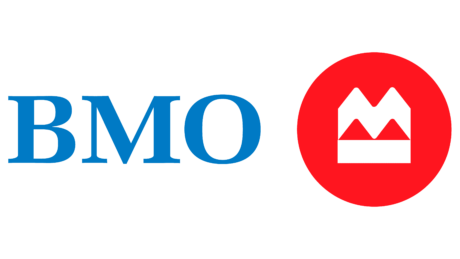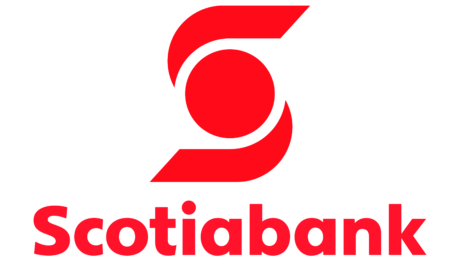Canada Mortgage Payment Calculator
Nerd Tip: Use the Compare feature of our calculator to view two different mortgage scenarios at once. For example, you might see how a 10% or 20% down payment affects the total mortgage amount, or how a 20-year amortization period affects your monthly payment estimate compared to a 25-year amortization.
Mortgage Details
Location Details
Location Details
Mortgage Summary
Estimated Payment
The following items show your expected payment schedule over the full amortization period.
$2,763
Monthly Payment
Mortgage details
Amortization Schedule
Balance remaining in undefined
Payments Breakdown
Year | Total Paid | Principal Paid | Interest Paid | Balance | |
|---|---|---|---|---|---|
| 2023 | $33,151.48 | $9,866.97 | $23,284.52 | $465,133.03 | |
| 2024 | $33,151.48 | $10,366.48 | $22,785.00 | $454,766.55 | |
| 2025 | $33,151.48 | $10,891.29 | $22,260.20 | $443,875.26 | |
| 2026 | $33,151.48 | $11,442.66 | $21,708.83 | $432,432.60 | |
| 2027 | $33,151.48 | $12,021.94 | $21,129.54 | $420,410.66 | |
Term Total | $165,757.42 | $54,589.34 | $111,168.08 | $420,410.66 | |
The line above displays the totals at the end of your mortgage term. At this time, you will renew your mortgage and choose among the rates that are available. The following analysis assumes you will lock in the same rate for the remainder of the amortization period, which may not be possible. | |||||
| 2028 | $33,151.48 | $12,630.55 | $20,520.93 | $407,780.11 | |
| 2029 | $33,151.48 | $13,269.98 | $19,881.51 | $394,510.13 | |
| 2030 | $33,151.48 | $13,941.77 | $19,209.72 | $380,568.36 | |
| 2031 | $33,151.48 | $14,647.57 | $18,503.91 | $365,920.79 | |
| 2032 | $33,151.48 | $15,389.10 | $17,762.38 | $350,531.69 | |
| 2033 | $33,151.48 | $16,168.18 | $16,983.31 | $334,363.51 | |
| 2034 | $33,151.48 | $16,986.69 | $16,164.79 | $317,376.82 | |
| 2035 | $33,151.48 | $17,846.64 | $15,304.84 | $299,530.18 | |
| 2036 | $33,151.48 | $18,750.13 | $14,401.36 | $280,780.05 | |
| 2037 | $33,151.48 | $19,699.35 | $13,452.13 | $261,080.70 | |
| 2038 | $33,151.48 | $20,696.63 | $12,454.85 | $240,384.06 | |
| 2039 | $33,151.48 | $21,744.40 | $11,407.08 | $218,639.66 | |
| 2040 | $33,151.48 | $22,845.21 | $10,306.27 | $195,794.45 | |
| 2041 | $33,151.48 | $24,001.75 | $9,149.73 | $171,792.70 | |
| 2042 | $33,151.48 | $25,216.84 | $7,934.65 | $146,575.86 | |
| 2043 | $33,151.48 | $26,493.44 | $6,658.04 | $120,082.42 | |
| 2044 | $33,151.48 | $27,834.67 | $5,316.81 | $92,247.75 | |
| 2045 | $33,151.48 | $29,243.80 | $3,907.68 | $63,003.95 | |
| 2046 | $33,151.48 | $30,724.27 | $2,427.22 | $32,279.68 | |
| 2047 | $33,151.48 | $32,279.68 | $871.80 | $0.00 | |
Balance remaining in undefined
Payments Breakdown
Year | Total Paid | Principal Paid | Interest Paid | Balance | |
|---|---|---|---|---|---|
| 2023 | $33,151.48 | $9,866.97 | $23,284.52 | $465,133.03 | |
| 2024 | $33,151.48 | $10,366.48 | $22,785.00 | $454,766.55 | |
| 2025 | $33,151.48 | $10,891.29 | $22,260.20 | $443,875.26 | |
| 2026 | $33,151.48 | $11,442.66 | $21,708.83 | $432,432.60 | |
| 2027 | $33,151.48 | $12,021.94 | $21,129.54 | $420,410.66 | |
Term Total | $165,757.42 | $54,589.34 | $111,168.08 | $420,410.66 | |
The line above displays the totals at the end of your mortgage term. At this time, you will renew your mortgage and choose among the rates that are available. The following analysis assumes you will lock in the same rate for the remainder of the amortization period, which may not be possible. | |||||
| 2028 | $33,151.48 | $12,630.55 | $20,520.93 | $407,780.11 | |
| 2029 | $33,151.48 | $13,269.98 | $19,881.51 | $394,510.13 | |
| 2030 | $33,151.48 | $13,941.77 | $19,209.72 | $380,568.36 | |
| 2031 | $33,151.48 | $14,647.57 | $18,503.91 | $365,920.79 | |
| 2032 | $33,151.48 | $15,389.10 | $17,762.38 | $350,531.69 | |
| 2033 | $33,151.48 | $16,168.18 | $16,983.31 | $334,363.51 | |
| 2034 | $33,151.48 | $16,986.69 | $16,164.79 | $317,376.82 | |
| 2035 | $33,151.48 | $17,846.64 | $15,304.84 | $299,530.18 | |
| 2036 | $33,151.48 | $18,750.13 | $14,401.36 | $280,780.05 | |
| 2037 | $33,151.48 | $19,699.35 | $13,452.13 | $261,080.70 | |
| 2038 | $33,151.48 | $20,696.63 | $12,454.85 | $240,384.06 | |
| 2039 | $33,151.48 | $21,744.40 | $11,407.08 | $218,639.66 | |
| 2040 | $33,151.48 | $22,845.21 | $10,306.27 | $195,794.45 | |
| 2041 | $33,151.48 | $24,001.75 | $9,149.73 | $171,792.70 | |
| 2042 | $33,151.48 | $25,216.84 | $7,934.65 | $146,575.86 | |
| 2043 | $33,151.48 | $26,493.44 | $6,658.04 | $120,082.42 | |
| 2044 | $33,151.48 | $27,834.67 | $5,316.81 | $92,247.75 | |
| 2045 | $33,151.48 | $29,243.80 | $3,907.68 | $63,003.95 | |
| 2046 | $33,151.48 | $30,724.27 | $2,427.22 | $32,279.68 | |
| 2047 | $33,151.48 | $32,279.68 | $871.80 | $0.00 | |

Best mortgage rates
Find the best mortgage rates in Canada.
Compare customized mortgage rates from Canada’s best lenders and brokers for free – all in one place
Current mortgage rate trends in Canada
Rates updated
This chart shows quarterly average conventional lending rates for mortgages, based on weekly posted interest rates offered by the six major chartered banks in Canada.
Data source: Bank of Canada
| 1-year | N/A |
| 3-year | N/A |
| 5-year | N/A |
More mortgage calculators to inform your decision
Mortgage affordability calculator ↗
Estimate how much house you can afford.
Mortgage closing costs calculator ↗
Create a home buying budget by estimating your closing costs.
Understanding mortgage payments
A mortgage payment calculator can provide you with some helpful data that goes a long way to showing you how much house you can afford. But a calculator like this can also be a valuable learning tool that shows you how the different elements of a mortgage interact and impact the cost of a mortgage.
What is a mortgage payment?
A monthly mortgage payment is the predetermined amount you pay to your lender each month to meet the conditions of your mortgage contract.
If the figure produced by a mortgage payment calculator doesn’t fit into your monthly budget, you may need to find a less expensive property, increase your down payment or opt for a longer amortization period in order to reduce the size of your monthly payment and make it more manageable.
What goes into a monthly mortgage payment?
Depending on the size of your down payment, your total monthly mortgage payment could include three separate expenses:
- Principal. The principal is the original amount you borrow. If you’re buying a $400,000 home and your down payment is $50,000, the principal is $350,000.
- Interest. In exchange for letting you borrow money, lenders charge interest. Mortgage interest rates are a major factor in any long-term mortgage.
- Mortgage default insurance. If your down payment is less than 20% of the home’s purchase price, you’ll be required to buy mortgage default insurance. Your mortgage default premium will be added to your principal, which means you’ll pay interest on it.
Other mortgage payment factors
It’s important to understand the elements that determine a mortgage payment. Doing so can help you strategize and adjust your approach if the payment amount is too high for you to afford.
Mortgage term
Your mortgage term is how long your current mortgage contract lasts. Once your term expires, you’ll generally have to renew your mortgage or pay it off in full. Some mortgage terms are only six months, some are 10 years.
Historically, Canadians have gravitated toward five-year terms, but a shift took place in 2023 that saw shorter terms become the more popular choice. In the first five months of the year, most borrowers opted for mortgage terms of between three and five years. Locking into a shorter-term mortgage when interest rates are high could make it possible for these borrowers to renew at a lower rate a few years earlier than if they had chosen a five-year term.
The length of your term doesn’t affect the size of your mortgage payment, but your mortgage payment might determine the length of your term. If high mortgage interest rates lead to a steep monthly payment, for example, you might only want to commit for a few years.
Amortization period
The amortization period is how long it will take to pay down your mortgage in full. If you have a down payment worth less than 20% of a home’s sale price, the longest amortization period you can choose is 25 years.
Choosing a longer amortization period will lower your monthly mortgage payment, but it will also mean paying interest to your lender for a longer period of time.
Mortgage term vs. amortization period
It can be easy to confuse the amortization period and the mortgage term. It might help to think of them this way: “term” is the shorter of the two words; it also represents the shorter period of time. You will likely complete several mortgage terms over the course of your amortization period.
Rate type
The type of interest you choose for your home loan — fixed-rate or variable-rate — can have a significant impact on your mortgage payment.
A fixed interest rate means your interest rate will stay the same for the duration of your mortgage term. If you get a five-year, fixed-rate mortgage at 5% in 2023, for example, you’ll have the same interest rate until 2028, unless you decide to refinance your loan mid-term.
With a variable-rate mortgage, your interest rate will rise and fall in response to changes in your lender’s prime rate. As the prime rate rises, so does your interest rate; when that happens, more of your mortgage payment will go toward interest and less will go toward the principal.
In extreme cases, where variable mortgage rates rise repeatedly over a long period of time, your monthly mortgage payment may not even cover the interest. When that happens, you’ll have reached your trigger rate, and will have to work with your lender to find a new payment solution.
Choosing between fixed and variable mortgage rates can be challenging. There’s less risk with fixed rates, but under normal financial conditions, variable rates tend to be lower. Always consult a mortgage professional — or several — when making a decision on rate type.
How to calculate a monthly mortgage payment
If a mortgage calculator isn't for you, and you’d prefer to do the math behind your mortgage payment yourself, we tip our hat to you.
To illustrate how this is done, we’ll use an example mortgage for a home worth $700,000, which is just below the average price of homes sold in Canada in April 2023. We’ll assume a down payment of 20% ($140,000), a 5% interest rate and a 25-year amortization period. We’ll also use a monthly payment frequency.
1. Principal
The first thing to do is establish the principal. This can be done by subtracting your down payment from the home’s sale price.
- $700,000 - $140,000 = $560,000
2. Total payments
You’ll also need to know the total number of mortgage payments you’ll be making. Calculate this number by multiplying the total years of your amortization by 12, the number of months in each year.
- 25 x 12 = 300
3. Monthly interest rate
Here’s where things get a little more complicated. Interest is an annual calculation, so you have to break down your interest rate to find out how much interest you’ll pay each month. Our formula does this in two steps.
First, you need to find out your effective annual interest rate (EAR). You do this using your actual rate (R) and the number of times interest compounds per year (C).
- EAR = ((1 + (R/C)) ^ C) - 1
- ((1 + (.05/2)) ^ 2) - 1 = 0.05062
Then you have to determine your monthly interest rate (R). You’ll need to plug your number of payments per year (N) into this one.
- R = (((1 + EAR) ^ (1/N)) -1)
- (((1+ 0.05062) ^ (1/12))-1 = .00412
4. Final calculation
You have all the numbers you need. It’s time to plug them into the formula for determining your monthly mortgage payment (P).
- P = Principal x monthly interest rate/ 1 - (1 + monthly interest rate) ^ (-total number of payments)
- 560,000 x 0.00412 / 1 - (1 + 0.00412) ^ (-300)
- Monthly payment = $3,257
Mortgage payment examples
Let’s take a look at two similar mortgages and see how a few small differences can impact their overall cost.
Note that Mortgage A includes no mortgage default insurance and has an amortization of 30 years. These are only possibilities if you’re making a down payment of 20% or more.
| Mortgage A | Mortgage B | |
|---|---|---|
| Home price | $500,000 | $500,000 |
| Down payment | $100,000 (20%) | $95,000 (19%) |
| Interest rate | 5% | 5% |
| Payment frequency | Monthly | Monthly |
| Amortization | 30 years | 25 years |
| Mortgage default insurance | N/A | $11,340 |
| Monthly mortgage payment | $2,135 | $2,421 |
| Total mortgage cost | $768,515 | $726,425 |
You can see that Mortgage B would put more pressure on your budget every month but cost you over $40,000 less overall. Upping Mortgage B’s down payment to 20% would eliminate the need for mortgage default insurance. In that scenario, the monthly mortgage payment would dip to $2,326 and the total mortgage cost would be $697,926.
It’s hard to understate the impact down payment amount and amortization length can have on the cost of a mortgage.
Common questions about mortgage payments
Why should I use a mortgage payment calculator?
A mortgage calculator can teach you a lot about the variables that affect the cost of a home loan. Our mortgage payment calculator can help you:
- Understand how different mortgage interest rates can affect the cost of your mortgage.
- See the impact the size of your down payment has on your monthly payments and the overall cost of your mortgage.
- Select an amortization period that aligns with your homeownership goals.
- Find a payment frequency that fits your budget.
- Decide on a term length for mortgage scenarios that work for you.
- Estimate your mortgage budget before you start reaching out to lenders.
How do I use a mortgage payment calculator?
Whether you’re a first-time home buyer or a current homeowner wondering what your next mortgage might cost, you’ll find our mortgage payment calculator easy to use. Just follow these simple steps:
- In the “Property Value” field, enter the price of the home you intend to buy or use the slide tool to indicate a price.
- In the “Down Payment” field, enter the amount of your down payment. You can use a dollar figure or a percentage of the home’s listing price.
- In the “Interest Rate” field, enter a potential mortgage interest rate. If you’re unsure of what value to enter, check Canada’s current mortgage rates to get an idea of a reasonable number.
- In the “Mortgage Term” field, choose how long you’d like to go before needing to renew your mortgage.
- In the “Rate Type” field, indicate whether your future mortgage will have a fixed or variable interest rate.
- In the “Amortization” field, choose the total length of your mortgage loan.
- In the “Payment Frequency” field, indicate how often you’ll make a mortgage payment.
What is an amortization schedule?
An amortization schedule explains how your mortgage payments evolve over the life of your home loan.
If you make no changes to your mortgage during the amortization period, your principal and interest amount will remain constant. But as you pay down your mortgage, the composition of those payments slowly reverses.
At the outset of your mortgage, most of your payment goes toward interest. But by the time you reach the last year of your loan, most of it will be going toward the principal.
What is a mortgage payment calculator’s "payment breakdown"?
The payment breakdown displayed by a mortgage payment calculator gives you more insight into your amortization schedule. You’ll be able to see how much interest and how much of the principal each payment takes care of, not just for your current mortgage term, but for every year of your amortization period.
Does the mortgage stress test affect my monthly mortgage payment?
Because it determines the maximum mortgage amount you can qualify for, the stress test has a significant impact on the size of your mortgage payment.
The rules of the stress test state that you have to qualify for a mortgage at a rate of either 5.25% or the rate you’ve been offered plus 2%, whichever is higher. If you’re offered a rate of 5%, for example, you have to be able to afford the same mortgage at 7% to be approved.
If you can’t pass the stress test, your lender will reduce the amount of your mortgage until you can. As that amount shrinks, so will your monthly mortgage payment.
How much is the mortgage payment on a $300,000 house?
Estimating mortgage payments based on a home’s price is difficult without knowing more about your finances.
If you make a significant down payment, for example, you’ll greatly reduce your monthly mortgage costs. If your credit score is low, you might have to get a mortgage from a B lender that charges you a high interest rate, which will lead to higher monthly payments.
Let’s say you have pristine credit, a $50,000 down payment and are offered a mortgage interest rate of 5%. A $300,000 house would cost you $1,495 a month.
But if your credit score is low, you only have the minimum down payment of $15,000, and the best rate you’re offered is 6.25%, your monthly payment would be $1,941.
How does my salary impact my mortgage payment?
One of the key factors that determines how large a mortgage you’re offered is how much money you’re earning. If your salary is large enough that it covers all of your debts and necessities with plenty to spare, lenders will feel confident that you can handle a monthly mortgage payment of a certain size.
But if your salary is smaller, and lenders don’t think you can handle a significant mortgage payment every month, they’ll reduce the amount they offer you. That smaller mortgage will result in smaller monthly payments.
Why does my rate change when I adjust my amortization from 25 years to 30 years?
In most cases, ifIf you want to extend the amortization of your mortgage to shrink your monthly payment, you’ll have to refinance. During a refinance, your lender may not be able to offer you the rate that was in effect when you signed your earlier mortgage. Your new rate will be based on what your lender is currently able to offer, and it could be higher than what you were previously paying.
In some instances, your lender might allow you to extend your amortization period without refinancing, but that shouldn’t be taken for granted. Make sure you understand the short- and long-term implications of any changes you make to your mortgage.
Can first-time home buyers get help with their mortgage payments?
There are several programs first-time home buyers in Canada can use to help increase their down payment savings, like the Home Buyers’ Plan and the First Home Savings Account. By making a larger down payment and borrowing less, your monthly payment should also decrease.
Are closing costs part of a mortgage payment?
A mortgage payment typically includes portions that go toward the principal, the interest and mortgage default insurance. Closing costs like commissions, land transfer taxes and legal fees will need to be paid separately.
Ways to reduce your monthly mortgage payment
Compare mortgage rates between lenders
By shopping around and comparing rates,you may be able to get a mortgage that charges a lower interest rate.
A mortgage with a 4.5% interest rate might not appear to be significantly cheaper than one that charges 4.65%, but shaving even a few percentage points off an interest rate can lower your monthly payment and save you thousands of dollars over the course of your mortgage.
When comparing mortgage offers, be thorough. Look at fixed-rate and variable-rate products, as well as open and closed mortgages. If making these comparisons feels confusing, stressful or boring, consider enlisting the services of a mortgage broker.
Make a bigger down payment
A larger down payment reduces the amount of money you need to borrow. You’ll pay less interest on your mortgage, and you may be able to arrange a shorter amortization period or smaller monthly payments.
Making a bigger down payment can also help you secure a better interest rate on your mortgage. You’ll have more equity in your home straight away, which makes you less of a risk in the eyes of lenders.
| Price of home | Minimum required down payment |
|---|---|
| $500,000 or less | 5% of purchase price |
| $500,001 to $999,999 | 5% on the first $500,000 of the price, 10% on everything above $500,000 |
| $1 million or more | 20% of purchase price |
Choose a longer amortization period
While choosing a longer amortization period will increase the number of payments and interest charges overall, spreading your mortgage out over a longer period will also result in smaller monthly payments.
You might end up paying more for your mortgage than you would with a shorter mortgage term, but the extra breathing room every month can be a game-changer if you’re a homeowner on a tight budget.
Refinance
If you’ve owned your home for a while, have been keeping on top of your mortgage payments and have good credit overall, refinancing your home loan can also help reduce your monthly mortgage payments.
When you refinance, you essentially begin a new mortgage. That gives you an opportunity to negotiate a lower interest rate and a new payment schedule, both of which can help lower your monthly obligations.
Next step: Get pre-approved for a mortgage
After using our mortgage payment calculator, you might discover that your budget can handle a mortgage large enough for a home you’d be happy in. If you’re in home buying mode, it’s important to reach out to a mortgage broker or lender and get pre-approved for a home loan.
Unlike a calculator, which provides estimates, a mortgage pre-approval will tell you how much a lender is prepared to loan you at a particular interest rate. You’ll be able to make an offer on a home knowing that you have the financing to follow through.
A pre-approval involves gathering all the relevant documents your lender requires to evaluate your finances and creditworthiness. Expect to be asked for:
- Identification.
- Proof of employment.
- Proof that you can afford the down payment and closing costs.
- Information about all your other personal assets.
- Information about your debts.
Your lender will also look at your debt service ratios and do a credit check. Once your finances have been thoroughly inspected, your lender will craft an offer that aligns with your ability to repay.
By getting pre-approved, you can lock in an interest rate for up to 120 days, which can protect you if rates increase during that time. If interest rates fall during your pre-approval period, you should be able to secure that lower rate when you formally apply for your mortgage.
How to pay off your mortgage faster
There are typically three ways you can speed up your mortgage pay-down. Most lenders will allow you to take the following actions, but they may attach conditions and limits.
Make lump-sum payments
Most mortgages will allow you to prepay some of your principal each year. With an open mortgage, you can prepay as much as you want; with a closed mortgage, you might be limited to pre-paying an additional 10-20% of your original mortgage balance annually.
Nerdy Tip: If you receive a windfall like a bonus or tax refund, consider putting it toward your mortgage principal if there isn’t a more pressing need for it. Just don’t go over your prepayment limit, or you could wind up paying significant prepayment penalties.
Increase your monthly payment amount
If you can afford it, arranging higher monthly payments with your lender will help whittle away at your outstanding mortgage balance.
As with lump-sum payments, you’ll only be allowed to increase your payment amount by a certain percentage each year before being penalized.
Make more frequent payments
Monthly payments may be common, but opting for smaller, more frequent payments can help shrink your mortgage balance faster. Accelerating your payments can help you make the equivalent of one extra mortgage payment per year.
Here are some different payment scenarios and the effect they’d have on a $500,000 mortgage with a 25-year amortization and an interest rate of 5%:
- Monthly: $2,989 payment, $382,835 in total interest.
- Bi-weekly (every fourteen days): $1,378 payment, $381,841 in total interest.
- Semi-monthly (twice a month): $1,493 payment, $381,912 in total interest.
- Weekly: $689 payment, $381,416 in total interest.
Frequently asked questions about mortgage payments
There are several scenarios in which your mortgage payment could change. If you have an open mortgage, for example, you could increase the frequency or amount of your payments. Your mortgage payment could also change if you refinance and secure a longer amortization period, or if you have a variable-rate mortgage and your interest rate increases.
The amount of your monthly payment on a $500,000 mortgage depends on the interest rate you’re offered and the amortization period you choose. At 5% and a 25-year amortization, your monthly payment would be $2,989. At 4% and 25 years, it would be $2,704. A 5% rate and a 20-year amortization would result in a monthly payment of $3,378.

Find the Best Mortgage Rates in Canada
Compare customized mortgage rates from Canada’s best lenders and brokers for free. Find and easily apply for the lowest mortgage rate for your needs.

4 Paths to a More Affordable Mortgage Payment
If your variable-rate mortgage payments are becoming too high to manage, options like payment deferrals and reamortizing can help keep you on track.

Find The Best 5-Year Fixed Mortgage Rates In Canada
Compare customized 5-year fixed mortgage rates from Canada’s best lenders and brokers for free. Find the lowest mortgage rate and apply for the home loan that best fits your needs.

Should You Switch to a Fixed Rate For the Rest of Your Mortgage Term?
Switching your mortgage from a variable to a fixed interest rate can help make your mortgage more affordable if rates are rising.



